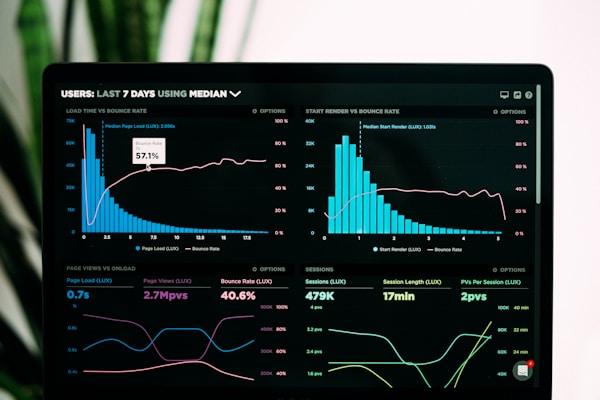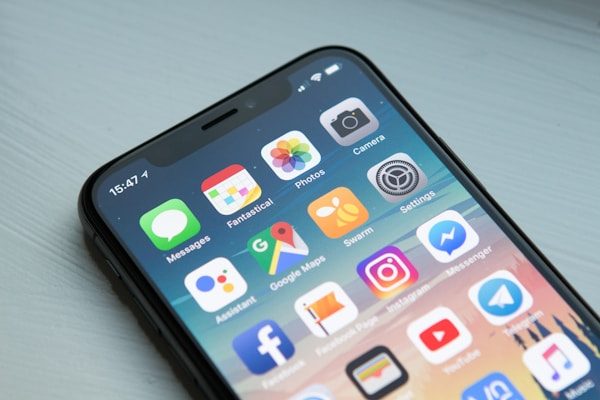Sarah Mitchell
Senior Integration Engineer
Published
Oct 15, 2024

In today's mobile-first world, push notifications have become the lifeline between businesses and their users. With an average click-through rate of 7-10% compared to email's 2-3%, and the power to boost app engagement by up to 88%, mastering push notifications is no longer optional—it's essential for any digital strategy aiming to keep users actively engaged and coming back for more.
In this comprehensive guide, we'll explore everything you need to know about push notifications: from understanding what makes them effective to implementing best practices that drive real results, helping you transform passive users into an engaged, loyal community.
What Are Push Notifications?
Push notifications are short, clickable messages that pop up on a user's device—whether they're actively using your app or not. These alerts appear on mobile devices, desktops, and tablets, delivering timely information directly to users through their device's notification center or lock screen.
Unlike emails that sit in crowded inboxes waiting to be opened, push notifications command immediate attention. They appear instantly on the device's screen, making them one of the most direct and effective communication channels available to modern businesses. This immediacy, combined with their visibility, makes push notifications a powerful tool for driving engagement, retention, and conversions.
Why Push Notifications Are Critical for User Engagement
The numbers tell a compelling story about the power of push notifications:
- Higher Engagement Rates: Push notifications achieve click-through rates of 7-10%, significantly outperforming email marketing's typical 2-3% rate. Users are up to 5 times more likely to engage with push notifications than emails.
- Improved User Retention: Apps that use push notifications see 3-10 times higher retention rates. Users who enable notifications are 88% more likely to remain active users after 90 days compared to those who don't.
- Instant Communication: Messages are delivered in real-time, with 90% of push notifications read within 3 minutes of receipt. This immediacy is crucial for time-sensitive information like flash sales or breaking news.
- Personalized Experience: Modern push platforms enable sophisticated segmentation, allowing you to send targeted messages based on user behavior, preferences, location, and lifecycle stage, resulting in up to 800% higher engagement for personalized notifications.
Types of Push Notifications That Drive Results
Understanding the different types of push notifications helps you choose the right approach for each user interaction:
1. Transactional Notifications
These provide users with critical updates about their actions or account activity. Examples include order confirmations, shipping updates, payment receipts, appointment reminders, and password reset alerts. Transactional notifications have the highest open rates (90%+) because users expect and need this information. They build trust and reduce customer service inquiries by keeping users informed at every step.
2. Promotional Notifications
Designed to drive sales and conversions, promotional push notifications inform users about special offers, discounts, new products, or limited-time deals. When properly targeted and timed, they can increase revenue by 25-50%. The key is relevance—promotional notifications should feel like opportunities, not interruptions. Use purchase history and browsing behavior to ensure offers match user interests.
3. Engagement Notifications
These bring inactive users back to your app or encourage deeper engagement with existing features. Examples include abandoned cart reminders, content recommendations, milestone celebrations, and re-engagement campaigns. Engagement notifications work best when they highlight specific value: "Your favorite items are back in stock" performs better than "Come check out our app."
4. Informational Notifications
These keep users informed about relevant updates, news, or content without requiring immediate action. Examples include breaking news alerts, blog post notifications, product updates, or information about topics users follow. Informational notifications add value by keeping users in the loop and positioning your brand as a trusted source of timely information.
5. Location-Based Notifications
Using geofencing technology, these notifications trigger when users enter or leave specific locations. Retail stores use them to announce in-store promotions, restaurants highlight daily specials when customers are nearby, and event venues send helpful information when attendees arrive. Location-based notifications can increase foot traffic by 20% and drive 4x higher conversion rates than generic messages.
Best Practices for Push Notifications That Convert
Following these proven strategies will help you maximize the effectiveness of your push notification campaigns:
1. Master the Permission Request
Never ask for notification permission the moment someone opens your app—this results in 60% denial rates. Instead, wait until users understand your app's value proposition. Use a "soft ask" that explains the benefits before triggering the system permission dialog. Apps that explain value before requesting permission see opt-in rates of 50% or higher, compared to 10-15% for immediate asks.
2. Personalize Every Message
Generic notifications are ignored. Use customer data to craft relevant, personalized messages. Address users by name, reference their past behavior, and tailor content to their interests and preferences. Personalized push notifications generate 4x higher click-through rates and can increase engagement by up to 800%. Segment your audience by demographics, behavior, purchase history, and engagement level for optimal results.
3. Perfect Your Timing
Timing can make or break your notification strategy. Analyze your user data to identify optimal send times. Generally, push notifications perform best during lunch hours (12-2 PM) and early evening (6-8 PM), but this varies by industry and audience. Always consider time zones for global audiences, and never send notifications during typical sleeping hours (11 PM - 7 AM) unless truly urgent. Well-timed notifications see 3-5x higher engagement rates.
4. Write Compelling, Actionable Copy
You have limited space—typically 40-50 characters for the title and 120-150 for the body on most devices. Make every word count. Use clear, benefit-driven language with strong calls-to-action. Instead of "New products available," try "Your wishlist items are 30% off today." Create urgency without being pushy: "Limited time," "Ending soon," or "Last chance" work when they're genuine.
5. Add Visual Elements
Rich notifications with images, emojis, or media stand out dramatically from plain text. Visual elements can increase engagement rates by 56%. Product images in e-commerce notifications, event photos for ticket reminders, or relevant emojis all catch the eye. However, ensure images are optimized for quick loading and are genuinely relevant to the message—don't add visuals just for the sake of it.
6. Implement Smart Segmentation
Not every message is relevant to every user. Segment your audience based on multiple factors: demographics, behavioral patterns, purchase history, app usage frequency, and lifecycle stage. Send targeted messages to specific segments rather than blasting everyone. A fitness app might send workout reminders to active users while sending re-engagement offers to dormant ones. Segmented notifications show 3x higher conversion rates than broadcast messages.
Common Push Notification Mistakes to Avoid
Learn from others' mistakes and avoid these critical pitfalls:
- Asking for Permission Too Early: Requesting notification access before users understand your app's value leads to high denial rates and lost opportunities. Users who deny once rarely enable notifications later.
- Sending Too Many Notifications: The fastest way to lose users is notification overload. Quality trumps quantity—most successful apps limit notifications to 2-5 per week. Every unnecessary notification increases your opt-out rate by 1-2%.
- Being Constantly Promotional: If every notification is a sales pitch, users will tune out or opt out. Balance promotional messages with valuable, informational, or transactional notifications. Aim for an 80/20 ratio: 80% value-add, 20% promotional.
- Ignoring Analytics: Sending notifications without tracking performance is like driving blindfolded. Monitor delivery rates, click-through rates, conversions, and opt-out rates. Use this data to continuously refine your strategy.
- Generic Messaging: "Check out our app!" doesn't work. Every notification should offer specific value: what's in it for the user? Why should they care right now?
- Neglecting Platform Differences: iOS and Android handle notifications differently. Optimize your strategy for both platforms, considering design guidelines, character limits, and user expectations.
Measuring Push Notification Success
Track these essential metrics to evaluate and optimize your push notification performance:
- Opt-In Rate: The percentage of users who enable notifications. Industry average is 40-50% for iOS and 60-70% for Android. Below 30% suggests your permission request needs improvement.
- Delivery Rate: How many notifications actually reach users' devices. Should be 95%+ for a healthy campaign. Lower rates indicate technical issues or users who uninstalled your app.
- Click-Through Rate (CTR): The percentage of users who tap on notifications. Average CTR is 7-10%, but this varies by industry. Personalized notifications can achieve 15-20% CTR.
- Conversion Rate: Users who complete desired actions after clicking. This is your ultimate success metric—aim for 5-10% conversion on promotional notifications.
- Opt-Out Rate: How many users disable notifications over time. Keep this below 5% monthly. High opt-out rates signal poor targeting or notification fatigue.
- Time to Action: How quickly users respond to notifications. Faster response times indicate higher urgency and relevance.
Advanced Push Notification Strategies
Once you've mastered the basics, implement these advanced tactics to maximize results:
A/B Testing Everything
Test different messaging, timing, emojis, images, and calls-to-action systematically. Even small changes can yield significant improvements. Test one variable at a time with statistically significant sample sizes. Successful apps run continuous A/B tests to optimize performance.
Behavioral Trigger Campaigns
Set up automated notification flows based on user actions. For example: send a notification 24 hours after cart abandonment, congratulate users on milestones, or remind them about unused credits. Behavioral triggers convert 3-5x better than scheduled broadcasts.
Deep Linking
Link users directly to relevant content within your app, not just the homepage. A notification about a sale should open directly to the sale items. Deep linking reduces friction and can double conversion rates by eliminating unnecessary navigation steps.
Rich Interactive Notifications
Modern platforms support actionable notifications where users can respond, like items, or complete tasks directly from the notification without opening the app. These interactive elements increase engagement by 25-40% compared to standard notifications.
The Future of Push Notifications
Push notification technology continues to evolve rapidly. Here's what's on the horizon:
- AI-Powered Personalization: Machine learning algorithms will predict the perfect message, timing, and content for each individual user, automatically optimizing campaigns in real-time based on millions of data points.
- Predictive Notifications: Proactive alerts based on user behavior patterns and predictive analytics, anticipating user needs before they even realize them.
- Voice-Enabled Notifications: Integration with smart speakers and voice assistants, allowing users to interact with notifications through voice commands.
- Enhanced Privacy Controls: More granular permission systems giving users greater control over notification types, frequency, and timing, with improved transparency.
- Cross-Platform Synchronization: Seamless notification experiences across mobile, desktop, wearables, and IoT devices with intelligent delivery to the most appropriate device.
Conclusion
Push notifications are far more than simple alerts—they're a strategic communication channel that, when used correctly, can dramatically improve user engagement, retention, and revenue. The key to success lies in delivering genuine value, respecting user preferences, and continuously optimizing based on data.
Remember that every notification you send either strengthens or weakens your relationship with users. Focus on relevance over frequency, personalization over generic broadcasts, and value over self-promotion. Start with a clear strategy, test relentlessly, and always prioritize the user experience above all else.
Ready to implement push notifications for your digital passes? Contact WePass to learn how we can help you create engaging notification campaigns that keep your users coming back.



